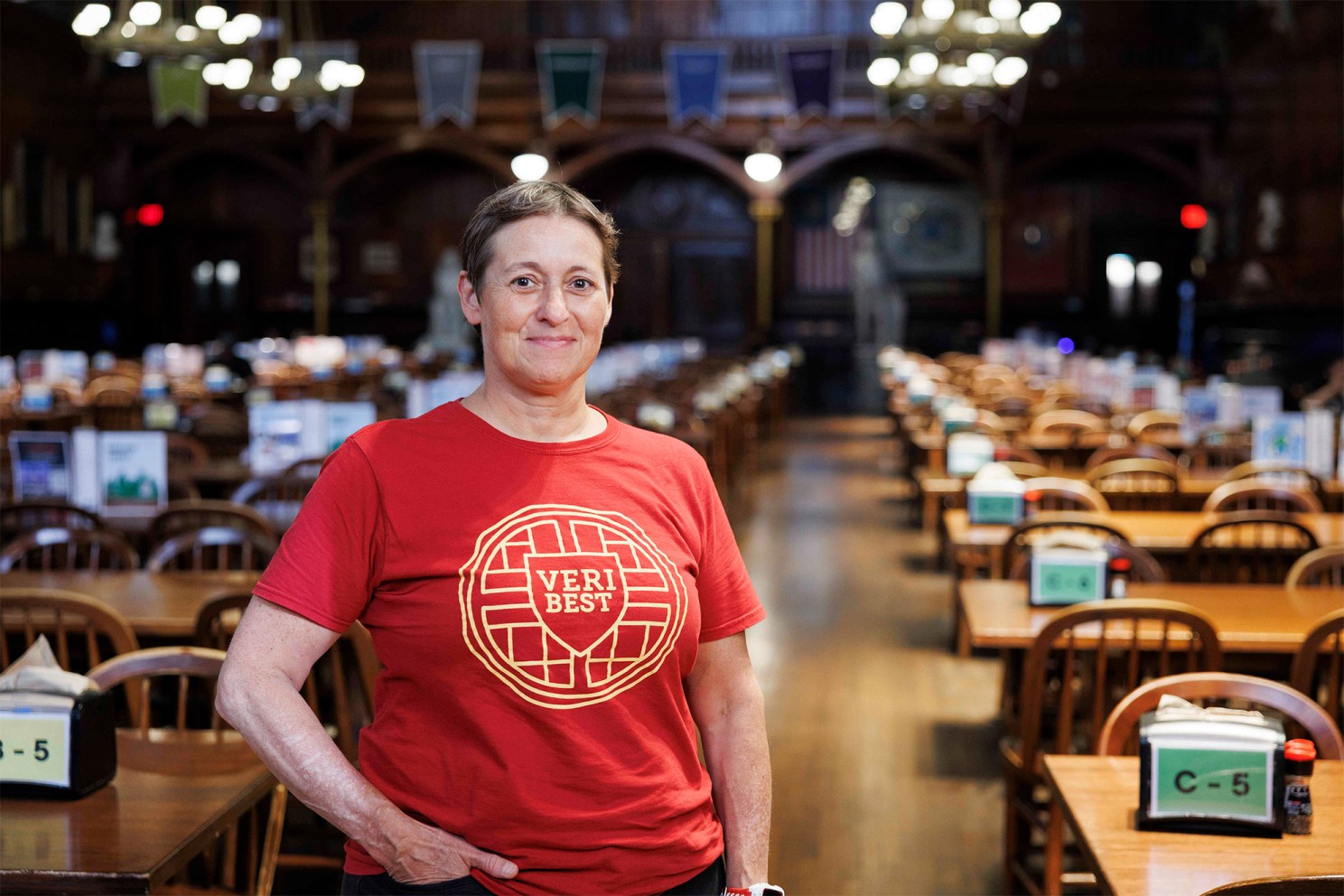
Barb Kempken, director for residential dining.
Niles Singer/Harvard Staff Photographer
All good, except grape pizza
University Dining Services directors talk ingredients, menus, financial and practical challenges of serving up 2.9 million meals per year
The diners have spoken: Lose the grape pizza.
“There was some real love out there for it,” said Barb Kempken, director for residential dining. “It had an interesting favorite flavor profile. But people had very strong feelings about it.”
Harvard University Dining Services’ Kempken and Crista Martin, director for strategic initiatives and communication, detailed in a recent panel discussion all that goes into planning, procuring, and preparing daily meals for thousands of College students, professors, and hundreds of staff.
“We have about 6,700 students on the meal plan. Then you add proctors, tutors, faculty, and deans, so about 7,000 people are eating,” Kempken said. “And obviously everybody has an opinion about food and what they’d like to see and what should be on menu.”
According to Kempken, the University Dining Services, or HUDS, serves 13,000 to 15,000 meals daily, across 14 dining halls. Each of Harvard’s 12 undergraduate Houses has its own dining hall, in addition to services in Annenberg Hall and Harvard Hillel.
Last year, Kempken said, residential dining served more than 2.9 million meals.
“And I say this with great pride,” she said.
All dining halls serve the same menu, which Kempken says rotates every three weeks.
So what exactly goes into deciding what food gets served up every week? First, both Kempken and Martin said, menus must be feasible.
“Menus have to be written thinking about, what can we source reliably? What do we have kitchen equipment for? You don’t want to write everything coming out of the fryer one day when you have one fryer in a House,” Kempken explained. “We also take into account what people want to eat. We try to work in the international cuisines, but also food that our teams can prepare as well.”
“When we serve dinner tonight, we need 1,000 pounds of fish. We also need 700 pounds of whatever the vegetable is that goes with that fish.”
Crista Martin
Martin added that the food has to be attainable from suppliers at both the quantity and cost needed. HUDS tries to keep its food costs capped at roughly 35 percent of the revenue generated by dining plans, she said.
“When we serve dinner tonight, we need 1,000 pounds of fish,” Martin said. “We also need 700 pounds of whatever the vegetable is that goes with that fish. That’s two ingredients, not the 100 we need at dinner. So imagine when you spread that out across 100 items across three meals a day.”
HUDS procures food and ingredients from a mix of local and national sources. According to Kempken, the service buys ingredients from more than 250 farms in Massachusetts alone.
And, she added, they contract with local businesses for premade items. HUDS works with a soup company in Chelsea and is in the process of signing a deal for bread with a bakery in Malden.
Kempken said all the house chefs and HUDS staff use data from the “text and tell” comment line along with “acceptability factors” when devising menus and deciding what items will stay or go.
“For example, if we have a certain item on the menu, what percentage was that item taken?” she said. “Most of the big overhaul we do over the summer. We begin looking at information in April or May and then we start making tweaks to the menu.”
But at the end of the day, Kempken said, HUDS continues to try new strategies to please the masses. (Just not grape pizza.)




